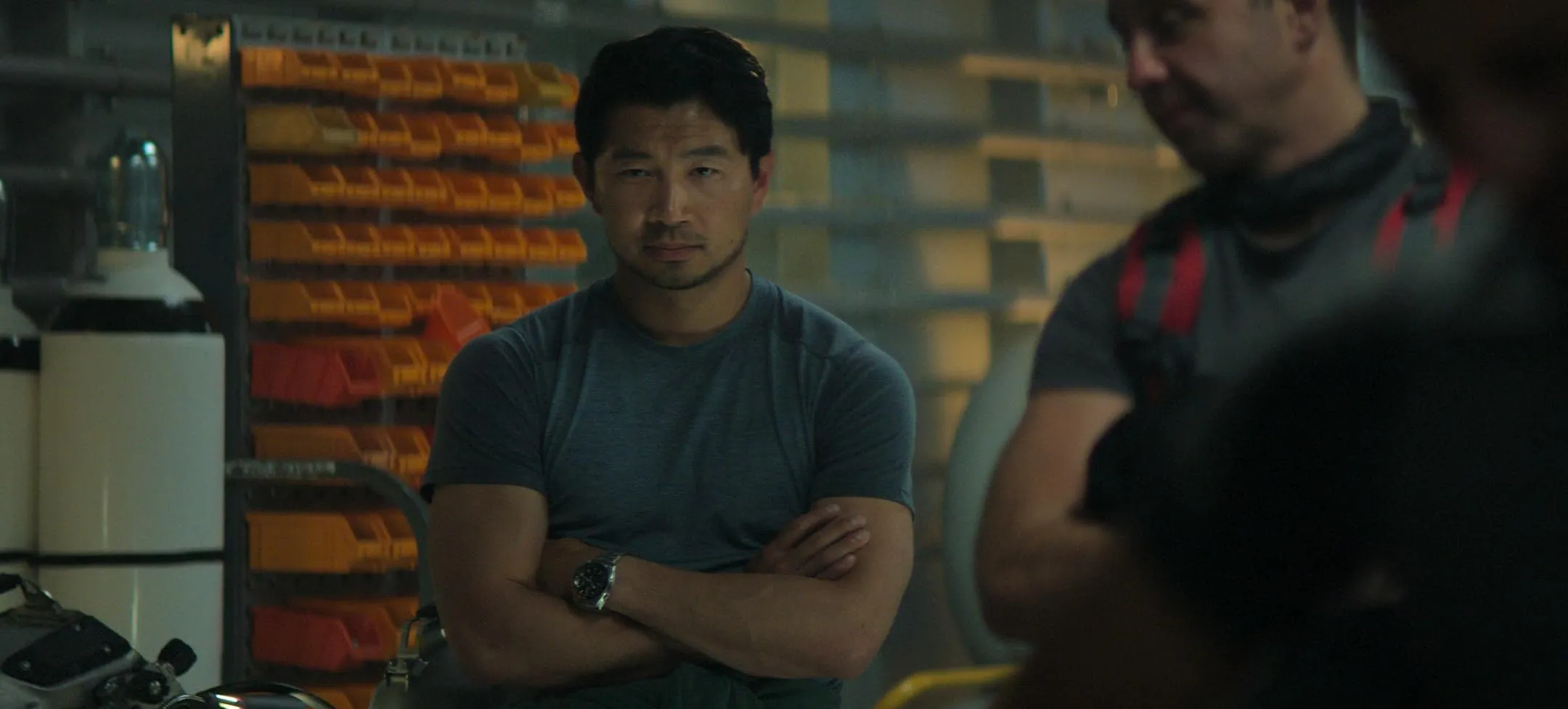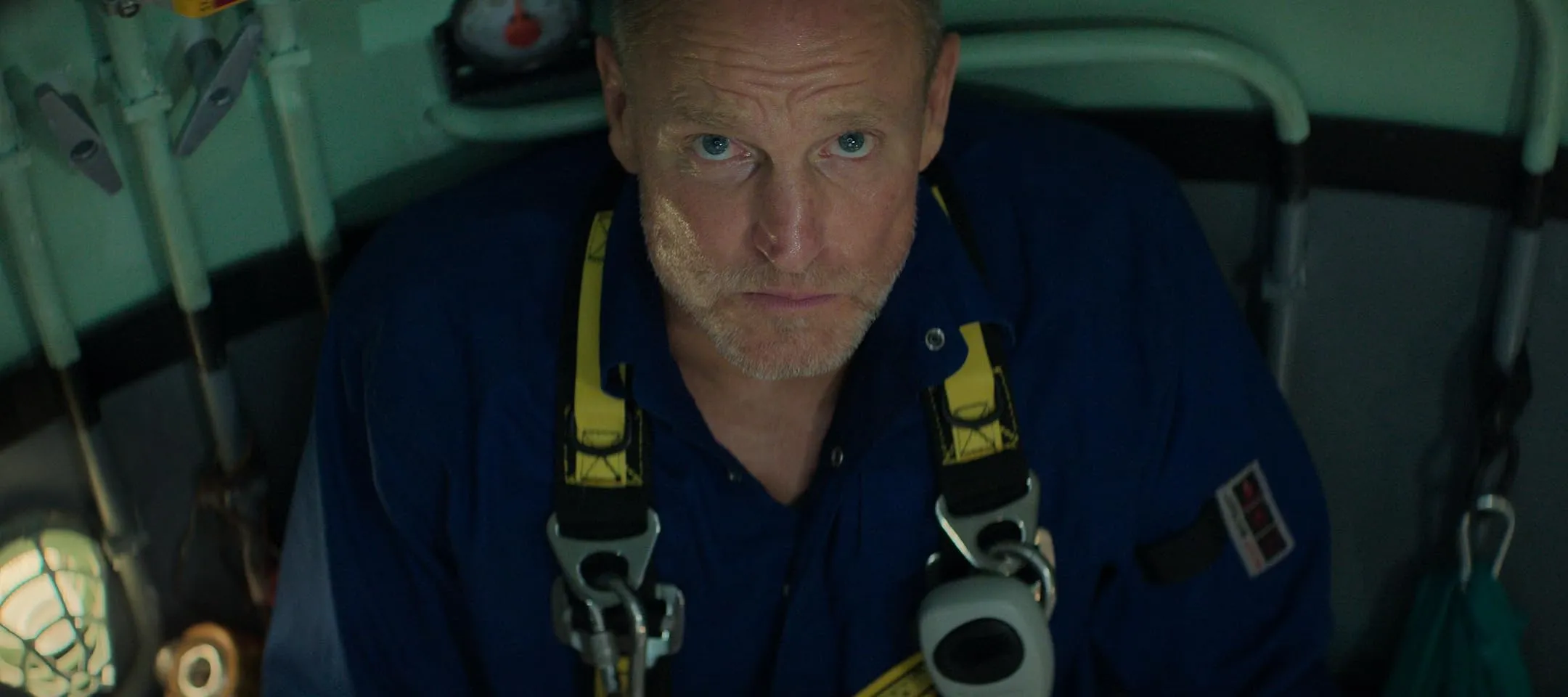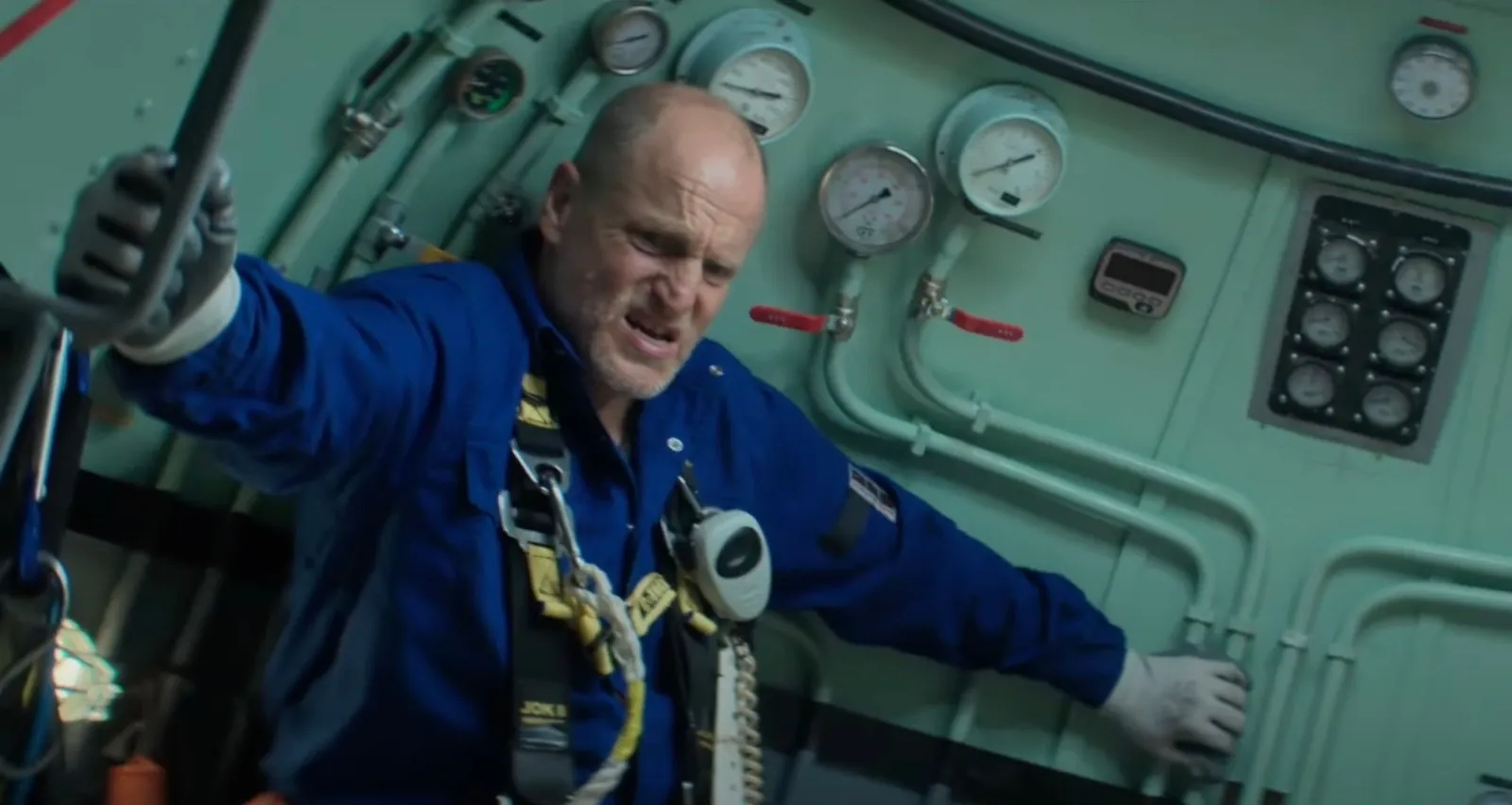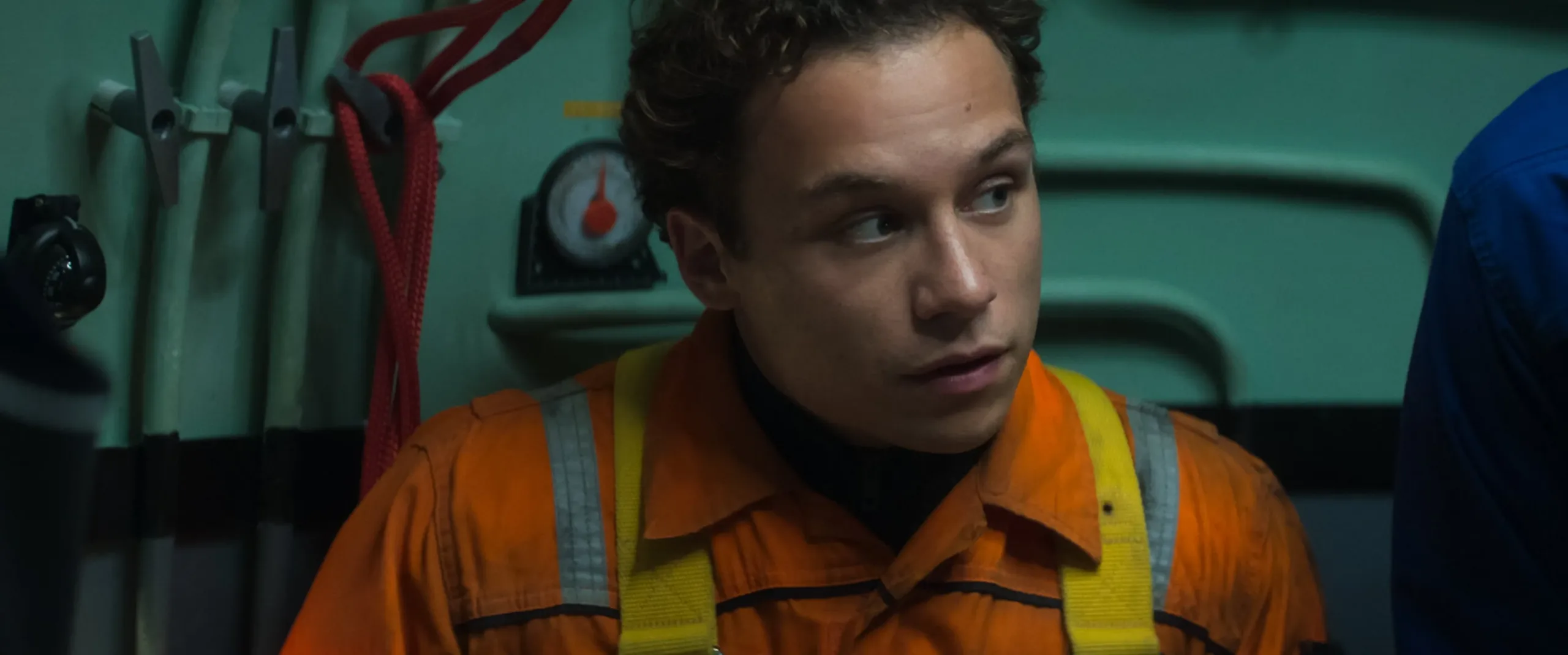A quiet, storm-tossed sea serves as the canvas for this cinematic exploration of human frailty and courage. The film reanimates a 2012 incident where a deep-sea rescue became a struggle against time and nature, transmuting a real-life ordeal into a visual meditation on mortality.
It paints the North Sea as both an indifferent expanse and a stage for extraordinary human resolve, where the technical discipline of saturation diving meets the raw unpredictability of the deep.
The narrative unfolds within the confines of a submerged world where every tick of a countdown signifies not only the depletion of oxygen but also the diminishing barrier between life and oblivion. Here, the vast, stygian underwater environment mirrors the inner voids and uncertainties that haunt modern existence.
The director, Alex Parkinson, abandons the detached formality of pure reportage, opting instead for a rendition that intertwines factual exactitude with an artistic portrayal of existential dread.
His approach renders the technical minutiae of diving and rescue operations into a language of symbols and metaphors, inviting viewers to ponder the delicate balance between human ingenuity and the inevitable forces of nature.
In this world, survival is measured not solely by physical endurance but by an unspoken dialogue with the dark unknown lurking beneath.
Chronicles of the Abyss: Narrative and Storytelling
The film unfolds with the stark reality of a scheduled deep-sea mission, where men in heavy suits slip into a world of endless dark and relentless pressure.
At first, we witness the meticulous preparations and solemn rituals of a diving team poised to repair a critical underwater installation. The narrative quickly shifts as a sudden calamity strikes—a moment when a routine task mutates into a harrowing test of human spirit.
An accident fractures the expected order; a severed tether, a cascade of unforeseen failures, and a race against the dwindling supply of precious air transform the mission into a desperate struggle for survival. Each sequence is methodically arranged, presenting a timeline that moves from controlled anticipation to raw, unmediated panic as time slips away.
A rhythmic urgency pulses through the film, punctuated by the ominous tick of a visible countdown. The cadence of each scene mirrors the accelerating heartbeat of a man confronting the void, as the measured pace of the dive descends into chaotic haste.
Time itself becomes an antagonist—a relentless force that haunts every frame. In this claustrophobic setting, even the smallest delay feels like an eternity, each second stretching into an expanse of uncertainty and impending loss.
The use of archival imagery and cameras embedded within the diving apparatus contributes a raw, unvarnished view of the unfolding crisis.
These moments of recorded reality blend with the narrative structure, giving the viewer a sense of bearing witness to a truth that is both recorded and reimagined. The intermingling of factual capture with dramatic retelling raises profound questions about our understanding of truth and the nature of storytelling in the face of life’s fragility.
Shadows in the Deep: Character Analysis and Performances
In the abyssal quiet of the film, Chris Lemons emerges as an unwitting wanderer confronting fate at its most relentless. A neophyte in the unforgiving world of deep-sea ventures, his inexperience is laid bare against the backdrop of imminent peril.
His eyes, wide with both wonder and trepidation, betray a silent dialogue with mortality—a conversation punctuated by the weight of a promise made to a tender soul waiting on the surface. This personal stake, marked by the fragile tether of his relationship, becomes a mirror reflecting the solitary battle against the relentless tide of existence.
Nearby, Duncan Allcock stands as a figure molded by years of hardship, a mentor weathered by the passage of time and the inexorable approach of an end he cannot outwit.
His seasoned presence and the quiet resignation to his imminent farewell paint a portrait of a man whose soul carries the scars of countless voyages beneath crushing pressures. His subtle gestures speak volumes about a spirit resigned to the inevitability of change, a poignant reminder of life’s impermanence.
Dave Yuasa, ever the practical force in the ensemble, reveals layers beneath his measured exterior. His pragmatic approach is intermittently pierced by moments of stark vulnerability—a fleeting glimpse of the human condition that shimmers briefly in the harsh light of crisis.
The interplay between these characters is a study in contrasts: the raw uncertainty of youth, the tempered wisdom of experience, and the quiet resolve born from silent suffering. Their interactions create a charged atmosphere where professional duty meets the intimate echoes of personal longing.
The archetypes present—each a shadow cast against the stark canvas of duty and despair—are neither neatly confined nor entirely predictable. Instead, they interlace in unexpected patterns, reflecting a universe in which identity is a shifting prism, each facet a different testament to the human struggle against an indifferent void.
The Machinery of Abyssal Artistry
The film’s visual narrative unfolds in a submerged realm where every frame is a study in contrasts. The underwater photography paints a vast, indifferent world; light filters through the depths in ethereal beams that struggle against the crushing darkness.
The framing of each shot is deliberate, inviting viewers to confront the endless, cold expanse of the deep. It is as if the camera itself ponders the existential isolation that comes with delving beneath the surface.
In tandem, the editing crafts a rhythm that mirrors the fragile cadence of life underwater. Diegetic cameras capture moments of stark, unmediated reality, while on-screen countdowns evoke a relentless pressure—an almost palpable urgency that renders time a silent, inexorable force. This approach not only propels the narrative forward but also transforms the unfolding crisis into a meditation on the ephemeral nature of existence.
The sound design emerges as an essential, almost tangible presence in this submerged landscape. Ambient noises from underwater operations blend with a haunting musical score, each note resonating with the strain of mortal vulnerability. The interplay of sound and silence magnifies the tension, allowing the viewer to feel the oppressive weight of every breath taken in the abyss.
Complementing these elements, the production design stands as a testament to meticulous craftsmanship. The technical equipment—the diving suits, the stark, utilitarian design of the diving bell—brings a raw authenticity to the screen.
Each practical effect is a reminder of the stark reality behind the cinematic illusion, a nod to the technical precision required in such perilous undertakings. The visual elements coalesce into an immersive experience where every detail speaks to the precarious balance between human endeavor and the merciless forces of nature.
Currents of Existence: Themes and Symbolism
The film’s narrative transforms a harrowing rescue into a meditation on the fragile essence of life. The struggle for survival is rendered as a quiet, relentless confrontation with the void, where every moment of diminishing oxygen speaks to the ephemeral spark of human will.
In the dim blue expanse, the instinct to persist is interwoven with a palpable tension—a struggle set against a canvas of ceaseless uncertainty that questions the very nature of being.
The deep, dark sea emerges as a dual presence: a domain fraught with peril and a stage where human resolve manifests itself amid chaos.
The precise craft of the divers clashes with the indifferent, overwhelming power of nature, setting up a contest that probes the limits of human endeavor. In this contest, confined spaces such as the diving bell and narrow underwater corridors evoke not only isolation but also the inner chambers of a soul searching for meaning.
The life-sustaining tether, a slender lifeline suspended between salvation and vulnerability, serves as a physical symbol of the tenuous link between connection and solitude.
Subtle visual motifs and measured narrative beats stir an undercurrent of anxiety and determination. Moments of muted color and the rhythm of time slipping away evoke a deep sense of loss, yet also hint at the stubborn persistence of hope.
The film’s imagery and pace invite reflection on sacrifice and the unspoken strength that enables one to endure even in the most suffocating darkness.
Whispers in the Abyss: Emotional Impact and Narrative Tension
The film harnesses the relentless pressure of a dwindling oxygen supply, where each second marked by a ticking clock deepens the viewer’s sense of dread. Real-time countdowns not only punctuate the narrative but also become a metronome to the slow, inevitable descent into chaos.
The underwater environment—with its omnipresent darkness and the chaotic murmur of a storm above—casts an eerie pall over every scene, amplifying anxiety as conditions worsen and stakes escalate.
Within this submerged theater, the protagonist finds himself in a crucible of isolation and desperation. The scarcity of oxygen and the oppressive blackness conspire to create a claustrophobic atmosphere, where the very air is a luxury and silence speaks volumes.
Shadows and fleeting glimmers of light dance over the cramped confines of the diving bell, their interplay evoking a visceral sense of being lost in an indifferent void. The auditory landscape is no less compelling: the hum of machinery, punctuated by the harsh cadence of failing signals, mirrors the internal collapse of hope.
Amid this orchestrated crisis, moments of raw human emotion emerge, often defying the cold logic of technical operations. Interactions among the divers, as well as with the surface crew, inject a fragile warmth into an otherwise relentless narrative.
There are instances when a shared look or a subtle gesture speaks more powerfully than any plan could, hinting at an unspoken bond that momentarily outshines the surrounding despair.
The film’s editing and narrative structure invite the viewer to step into this turbulent realm. Visual metaphors—a lone diver silhouetted against a tumultuous seascape or the frantic pulsation of a countdown—draw the audience into an experience that is as immersive as it is unsettling, challenging the boundaries between calculated procedure and the raw unpredictability of human emotion.
The Review
Last Breath
In the relentless depths where survival becomes an intimate meditation on human fragility, this film marries stark realism with poetic introspection. Its relentless tension, immersive visuals, and subtle interplay of emotion and technicality provoke a reflective journey into the human condition. The film challenges the viewer to confront our own impermanence, leaving an indelible mark on the soul.
PROS
- Immersive underwater visuals and sound design
- Gripping suspense and narrative tension
- Strong central performances
CONS
- Some supporting characters lack depth
- Pacing may feel uneven in parts




















































